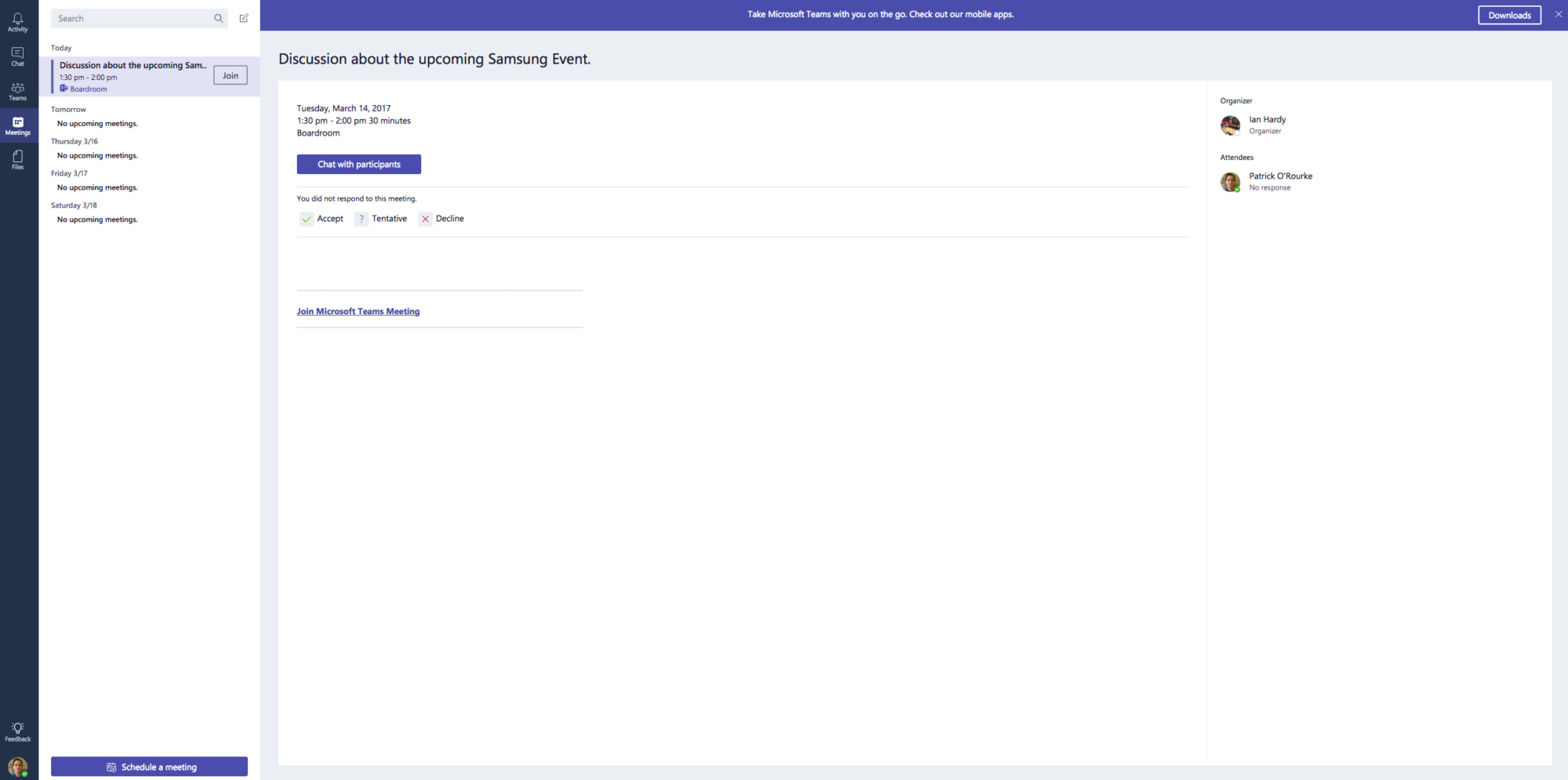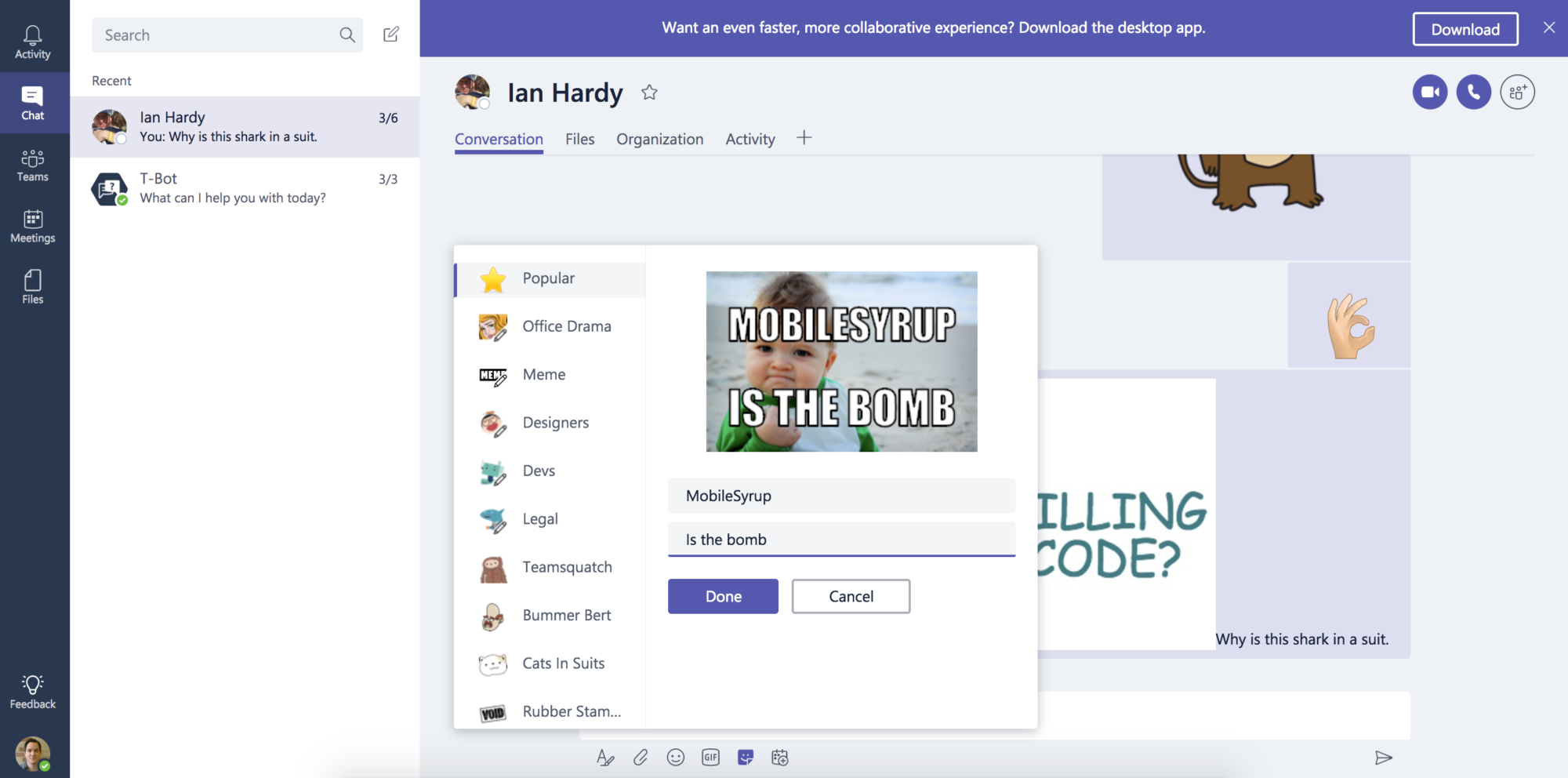
While Microsoft’s ‘Teams’ is late to the game given Slack has solidified its position as the dominant team collaboration chat platform for many businesses, particularly in the publishing and startup space, amassing a user base of approximately over 930,000, the Redmond, Washington-based tech giant’s chat tool has finally launched its final version.
The preview version of Teams has been available for a number of months, allowing those interested to take the software for a spin, but today marks the release of the final iteration of Microsoft’s long-in-development collaborative software. Microsoft started developing Teams in early 2016 following the company reportedly ditching a $8 million USD bid to purchase Slack that didn’t get off the ground.
Similar to Slack, Microsoft says Teams is a “chat-based workspace” linked directly to its popular Office 365 platform, and the similarities between both platforms are difficult to deny.
 One of Teams’ key advantages over Slack, its main competitor in the space, is that the platform seamlessly integrates Microsoft services included in the company’s Office 365 package. According to Microsoft, this leads to fast and easy collaboration between multiple parties across disparate, but now connected programs such as Excel and Word.
One of Teams’ key advantages over Slack, its main competitor in the space, is that the platform seamlessly integrates Microsoft services included in the company’s Office 365 package. According to Microsoft, this leads to fast and easy collaboration between multiple parties across disparate, but now connected programs such as Excel and Word.
Examples of other software integrated with Teams includes Excel, Power Point, Outlook and even the company’s note taking app, OneNote. Third-party integration is less extensive and could prove to be one of Teams’ weak points at launch, though including a connection to GitHub is a plus for those in coding heavy industries that frequently utilize the open source platform for organization and planning purposes.
Microsoft says that additional third-party app integration with Teams is on the way, with the service launching with the ability to link to apps like Trello, Twitter, Wunderlist and Google Analytics. Though Slack and other collaboration competitors offer many of the latter services as well, it’s still a plus that along with this functionality Teams also includes Office 365 integration.

While Teams is in undeniably similar to Slack in many ways, it also does offer a few features the current king of collaboration platforms doesn’t, complete with a slightly cleaner user interface and greater air of professionalism. For example, threading conversations makes more sense in Teams and is visually clearer, allowing users to easily indicate that they have directly replied to any message, but still have them linked to an overall conversation. Another interesting feature called ‘Tabs,’ allows users to easily pin third-party apps and files to channels within private chats in Teams, making relevant content easy to access without having to leave leave the platform.
This is one of Slack’s most significant issues; when an important file is uploaded to the platform, it often becomes quickly buried under a sea of gifs and Taylor Swift memes. In Teams, files have their own dedicated tab located under the service’s left hand navigation panel, giving easy access to all files uploaded to the service and shared with the team.
In terms of design, the app bar on the left hand side of the display is the primary method of navigating Teams. Similar to Slack’s user interface, this is also where notifications, recent activity, teams, meetings, and files appear.
In another move that’s reminiscent of Slack’s channel system, clicking on ‘Activity’ displays notifications related to recent actions in Teams, such as when a user has been ‘@mentioned’ or has replied to a conversation.

Chat also displays private one-on-one conversations and group chats, with the Teams tab showing specific ‘Teams’ a user is a member of. Meetings, however, displays a list of meetings and schedules. Individual channels focused on specific topics can also be created in Teams, allowing companies or groups to hone in on a specific, organized discussion.
There’s also a feature that is perhaps Team’s biggest differentiator from Slack: the ability to create memes quickly and easily within the platform.
While Teams may appeal to businesses that already utilize Microsoft’s expansive Office 365 suite and its bot functionality is impressive and arguably ahead of Slack’s, it’s still unclear how deep the platform’s third-party app-integration will become. Many publications and companies, including MobileSyrup, utilize Slack third-party integration facilitated by apps like Zapier for communication and editorial structure, though integration seems to be in the works.
Microsoft Teams is available now to Office 365 commercial customers with a Business Essentials, Business Premium, or Enterprise E1, E3 and E5 plan. An iOS, Android and Windows Phone version of Teams is also set to be available.
MobileSyrup may earn a commission from purchases made via our links, which helps fund the journalism we provide free on our website. These links do not influence our editorial content. Support us here.


